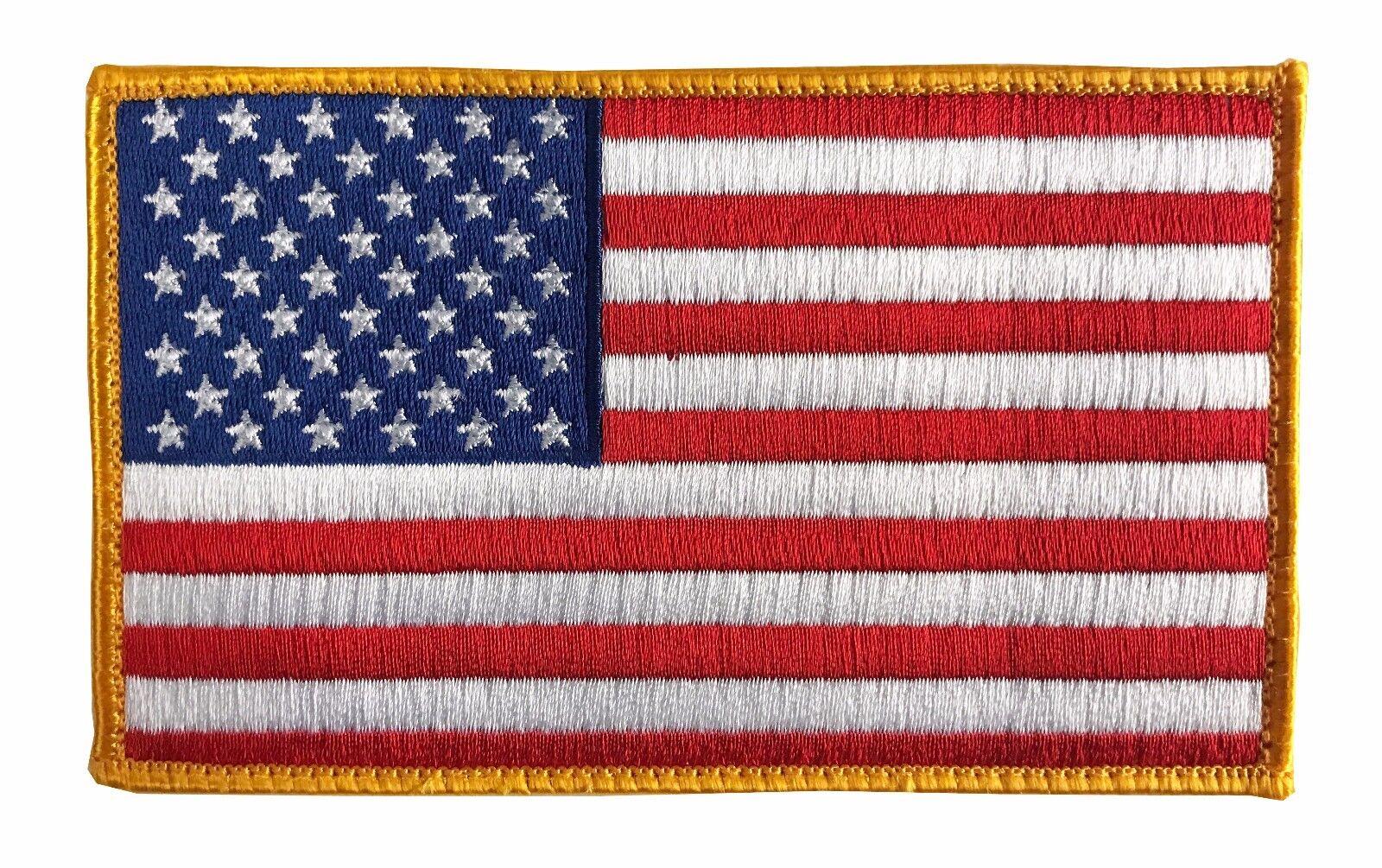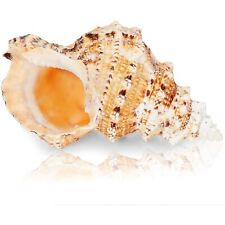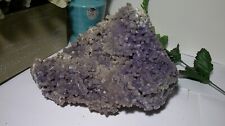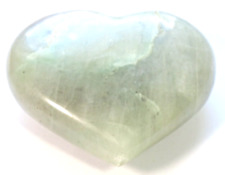Large 5" X 3" US American Flag Patch (Standard) Hook and Look Backing - ODA, SF For Sale

When you click on links to various merchants on this site and make a purchase, this can result in this site earning a commission. Affiliate programs and affiliations include, but are not limited to, the eBay Partner Network.
Large 5" X 3" US American Flag Patch (Standard) Hook and Look Backing - ODA, SF:
$8.50
4-17 INFANTRYHook and Loop - GREAT FOR UNIFORMS, VETERANS, DISPLAYS, ETC5" X 3" AMERICAN FLAG MERROWED EDGE EMBROIDERED PATCH
WITH Hook & LoopBACKING - VERY NICE PATCH
The flag of the United States of America, often referred to as the Americanflag, is the national flag of the United States. It consists of thirteen equalhorizontal stripes of red (top and bottom) alternating with white, with a bluerectangle in the canton (referred to specifically as the "union") bearing fiftysmall, white, five-pointed stars arranged in nine offset horizontal rows of sixstars (top and bottom) alternating with rows of five stars. The 50 stars on theflag represent the 50 states of the United States of America, and the 13 stripesrepresent the thirteen British colonies that declared independence from theKingdom of Great Britain, and became the first states in the Union. Nicknamesfor the flag include the Stars and Stripes, Old Glory, and the Star-SpangledBanner.Designer of the first stars and stripes
Francis Hopkinson ofNew Jersey, a naval flag designer, and a signer of the Declaration ofIndependence, designed the 1777 flag while he was the Chairman of theContinental Navy Board's Middle Department, sometime between his appointment tothat position in November 1776 and the time that the flag resolution was adoptedin June 1777. The Navy Board was under the Continental Marine Committee. Notonly did Hopkinson claim that he designed the U.S. flag, but he also claimedthat he designed a flag for the U.S. Navy. Hopkinson was the only person to havemade such a claim during his own lifetime, when he sent a letter and severalbills to Congress for his work. These claims are documented in the Journals ofthe Continental Congress and George Hasting's biography of Hopkinson. Hopkinsoninitially wrote a letter to Congress, via the Continental Board of Admiralty. Inthis letter, he asked for a "Quarter Cask of the Public Wine" as payment fordesigning the U.S. flag, the seal for the Admiralty Board, the seal for theTreasury Board, Continental currency, the Great Seal of the United States, andother devices. However, in three subsequent bills to Congress, Hopkinson askedto be paid in cash, but he did not list his U.S. flag design. Instead, he askedto be paid for designing the "great Naval Flag of the United States" in thefirst bill; the "Naval Flag of the United States" in the second bill; and "theNaval Flag of the States" in the third, along with the other items. The flagreferences were generic terms for the naval ensign that Hopkinson had designed,that is, a flag of seven red stripes and six white ones. The predominance of redstripes made the naval flag more visible against the sky on a ship at sea. Bycontrast, Hopkinson's flag for the United States had seven white stripes, andsix red ones – in reality, six red stripes laid on a white background.Hopkinson's sketches have not been found, but we can make these conclusionsbecause Hopkinson incorporated different stripe arrangements in the Admiralty(naval) Seal that he designed in the Spring of 1780 and the Great Seal of theUnited States that he proposed at the same time. His Admiralty Seal had sevenred stripes; whereas, his second U.S. Seal proposal had seven white ones.Hopkinson's flag for the Navy is the one that the Nation preferred as thenational flag. Remnants of Hopkinson's U.S. flag of seven white stripes can befound in the Great Seal of the United States and the President's seal. WhenHopkinson was chairman of the Navy Board, his position was like that of today'sSecretary of the Navy. The payment was not made, however, because it wasdetermined he had already received a salary as a member of Congress. Thiscontradicts the legend of the Betsy Ross flag, which suggests that she sewed thefirst Stars and Stripes flag by request of the government in the Spring of 1776.Furthermore, a letter from the War Board to George Washington on May 10, 1779,documents that there was still no design established for a national flag for theArmy's use in battle.The origin of the stars and stripes design has beenmuddled by a story disseminated by the descendants of Betsy Ross. The apocryphalstory credits Betsy Ross for sewing the first flag from a pencil sketch handedto her by George Washington. No evidence for this exists either in the diariesof George Washington nor in the records of the Continental Congress. Indeed,nearly a century passed before Ross' grandson, William Canby, first publiclysuggested the story in 1870. By her family's own admission, Ross ran anupholstery business, and she had never made a flag as of the supposed visit inJune 1776. Furthermore, her grandson admitted that his own search through theJournals of Congress and other official records failed to find corroboration ofhis grandmother's story.The family of Rebecca Young claimed that shesewed the first flag. Young's daughter was Mary Pickersgill, who made the StarSpangled Banner Flag. According to rumor, the Washington family coat of arms,shown in a 15th-century window of Selby Abbey, was the origin of the stars andstripes.The modern meaning of the flag was forged in December 1860, whenMajor Robert Anderson moved the U.S. garrison from Fort Moultrie to Fort Sumterin Charleston Harbor. Author Adam Goodheart argues this was the opening move ofthe American Civil War, and the flag was used throughout northern states tosymbolize American nationalism and rejection of secessionism.Before thatday, the flag had served mostly as a military ensign or a convenient marking ofAmerican territory, flown from forts, embassies, and ships, and displayed onspecial occasions like American Independence day. But in the weeks after MajorAnderson's surprising stand, it became something different. Suddenly the Starsand Stripes flew—as it does today, and especially as it did after the September11 attacks in 2001—from houses, from storefronts, from churches; above thevillage greens and college quads. For the first time American flags weremass-produced rather than individually stitched and even so, manufacturers couldnot keep up with demand. As the long winter of 1861 turned into spring, that oldflag meant something new. The abstraction of the Union cause was transfiguredinto a physical thing: strips of cloth that millions of people would fight for,and many thousands die for.
– Adam Goodheart.The flag of the UnitedStates is one of the nation's most widely recognized symbols. Within the UnitedStates, flags are frequently displayed not only on public buildings but onprivate residences. The flag is a common motif on decals for car windows, andclothing ornaments such as badges and lapel pins. Throughout the world the flaghas been used in public discourse to refer to the United States.The flaghas become a powerful symbol of Americanism, and is proudly flown on manyoccasions, with giant outdoor flags used by retail outlets to draw customers.Desecration of the flag is considered a public outrage, but remains protected asfreedom of speech. In worldwide comparison, Testi noted in 2010 that the UnitedStates was not unique in adoring its banner, for the flags of Scandinaviancountries are also "beloved, domesticated, commercialized and sacralizedobjects".The 49- and 50-star unionsA U.S. flag with gold fringeand a gold eagle on top of the flag pole.
When Alaska and Hawaii were beingconsidered for statehood in the 1950s, more than 1,500 designs were submitted toPresident Dwight D. Eisenhower. Although some of them were 49-star versions, thevast majority were 50-star proposals. At least three of these designs wereidentical to the present design of the 50-star flag. At the time, credit wasgiven by the executive department to the United States Army Institute ofHeraldry for the design.Of these proposals, one created by 17-year-oldRobert G. Heft in 1958 as a school project received the most publicity. Hismother was a seamstress, but refused to do any of the work for him. Heoriginally received a B– for the project. After discussing the grade with histeacher, it was agreed (somewhat jokingly) that if the flag was accepted byCongress, the grade would be reconsidered. Heft's flag design was chosen andadopted by presidential proclamation after Alaska and before Hawaii was admittedinto the Union in 1959. According to Heft, his teacher did keep to theiragreement and changed his grade to an A for the project. Both the 49- and50-star flags were each flown for the first time ever at Fort McHenry onIndependence Day one year apart, 1959 and 1960 the flag may be decorated with golden fringe surrounding theperimeter of the flag as long as it does not deface the flag proper. Ceremonialdisplays of the flag, such as those in parades or on indoor posts, often usefringe to enhance the appearance of the flag.The first recorded use offringe on a flag dates from 1835, and the Army used it officially in 1895. Nospecific law governs the legality of fringe, but a 1925 opinion of the attorneygeneral addresses the use of fringe (and the number of stars) "... is at thediscretion of the Commander in Chief of the Army and Navy ..." as quoted fromfootnote in previous volumes of Title 4 of the United States Code law books andis a source for claims that such a flag is a military ensign not civilian.However, according to the Army Institute of Heraldry, which has official custodyof the flag designs and makes any change ordered, there are no implications ofsymbolism in the use of fringe. Several federal courts have upheld thisconclusion, most recently and forcefully in Colorado v. Drew, a Colorado Courtof Appeals judgment that was released in May 2010. Traditionally, the Army andAir Force use a fringed National Color for parade, color guard and indoordisplay, while the Sea Services (Navy, Marine Corps and Coast Guard) use afringeless National Color for all uses.Display and useThe flagis customarily flown year-round at most public buildings, and it is not unusualto find private houses flying full-size (3 by 5 feet (0.91 by 1.52 m)) flags.Some private use is year-round, but becomes widespread on civic holidays likeMemorial Day, Veterans Day, Presidents' Day, Flag Day, and on Independence Day.On Memorial Day it is common to place small flags by war memorials and next tothe graves of U.S. war veterans. Also on Memorial Day it is common to fly theflag at half staff, until noon, in remembrance of those who lost their livesfighting in U.S. wars.Flag etiquette
Main article: United States FlagCodeThe proper stationary vertical display. The canton (blue box ofstars) should always be in the upper-left corner.
The United States Flag Codeoutlines certain guidelines for the use, display, and disposal of the flag. Forexample, the flag should never be dipped to any person or thing, unless it isthe ensign responding to a salute from a ship of a foreign nation. Thistradition may come from the 1908 Summer Olympics in London, where countries wereasked to dip their flag to King Edward VII: the American flag bearer did not.Team captain Martin Sheridan is famously quoted as saying "this flag dips to noearthly king", though the true provenance of this quotation is unclear.The flag should never be allowed to touch the ground and, if flown at night,must be illuminated. If the edges become tattered through wear, the flag shouldbe repaired or replaced. When a flag is so tattered that it can no longer serveas a symbol of the United States, it should be destroyed in a dignified manner,preferably by burning. The American Legion and other organizations regularlyconduct flag retirement ceremonies, often on Flag Day, June 14. (The Boy Scoutsof America recommends that modern nylon or polyester flags be recycled insteadof burned, due to hazardous gases being produced when such materials areburned.)The Flag Code prohibits using the flag "for any advertisingpurpose" and also states that the flag "should not be embroidered, printed, orotherwise impressed on such articles as cushions, handkerchiefs, napkins, boxes,or anything intended to be discarded after temporary use". Both of these codesare generally ignored, almost always without comment.Section 8, entitledRespect For Flag states in part: "The flag should never be used as wearingapparel, bedding, or drapery", and "No part of the flag should ever be used as acostume or athletic uniform". Section 3 of the Flag Code defines "the flag" asanything "by which the average person seeing the same without deliberation maybelieve the same to represent the flag of the United States of America".An additional part of Section 8 Respect For Flag, that is frequently violated atsporting events is part (c) "The flag should never be carried flat orhorizontally, but always aloft and free."Although the Flag Code is U.S.federal law, there is no penalty for a private citizen or group failing tocomply with the Flag Code and it is not widely enforced—indeed, punitiveenforcement would conflict with the First Amendment right to freedom of speech.Passage of the proposed Flag Desecration Amendment would overrule legalprecedent that has been established.Display on vehicles
When the flagis affixed to the right side of a vehicle of any kind (e.g.: cars, boats,planes, any physical object that moves), it should be oriented so that thecanton is towards the front of the vehicle, as if the flag were streamingbackwards from its hoist as the vehicle moves forward. Therefore, U.S. flagdecals on the right sides of vehicles may appear to be reversed, with the unionto the observer's right instead of left as more commonly seen.The flaghas been displayed on every U.S. spacecraft designed for manned flight,including Mercury, Gemini, Apollo Command/Service Module, Apollo Lunar Module,and the Space Shuttle. The flag also appeared on the S-IC first stage of theSaturn V launch vehicle used for Apollo. But since Mercury, Gemini, and Apollowere launched and landed vertically and were not capable of horizontalatmospheric flight as the Space Shuttle did on its landing approach, the"streaming" convention was not followed and these flags were oriented with thestripes running horizontally, perpendicular to the direction of flight.Display on uniformsThe crew of Apollo 1 wore their flags on the rightshoulder, unlike all other US astronaut flight crewsOn some U.S.military uniforms, flag patches are worn on the right shoulder, following thevehicle convention with the union toward the front. This rule dates back to theArmy's early history, when both mounted cavalry and infantry units woulddesignate a standard bearer, who carried the Colors into battle. As he charged,his forward motion caused the flag to stream back. Since the Stars and Stripesare mounted with the canton closest to the pole, that section stayed to theright, while the stripes flew to the left. Several US military uniforms, such asflight suits worn by members of the United States Navy, have the flag patch onthe left shoulder.Other organizations that wear flag patches on theiruniforms can have the flag facing in either direction. The congressional charterof the Boy Scouts of America stipulates that the uniforms should not imitateU.S. military uniforms; consequently, the flags are displayed on the rightshoulder with the stripes facing front, the reverse of the military style. Lawenforcement officers often wear a small flag patch, either on a shoulder, orabove a shirt pocket.Every U.S. astronaut since the crew of Gemini 4 hasworn the flag on the left shoulder of his or her space suit, with the exceptionof the crew of Apollo 1, whose flags were worn on the right shoulder. In thiscase, the canton was on the left.Postage stampsThe flag did notappear on U.S. postal stamp issues until the Battle of White Plains Issue wasreleased in 1926, depicting the flag with a circle of 13 stars. The 48-star flagfirst appeared on the General Casimir Pulaski issue of 1931, though in a smallmonochrome depiction. The first U.S. postage stamp to feature the flag as thesole subject was issued July 4, 1957, Scott catalog number 1094. Since that timethe flag has frequently appeared on U.S. stamps.Display in museumsIn 1907 Eben Appleton, New York stockbroker and grandson of LieutenantColonel George Armistead (the commander of Fort McHenry during the 1814bombardment) lent the Star Spangled Banner Flag to the Smithsonian Institution,and in 1912 he converted the loan to a gift. Appleton donated the flag with thewish that it would always be on view to the public. In 1994, the National Museumof American History determined that the Star Spangled Banner Flag requiredfurther conservation treatment to remain on public display. In 1998 teams ofmuseum conservators, curators, and other specialists helped move the flag fromits home in the Museum's Flag Hall into a new conservation laboratory. Followingthe reopening of the National Museum of American History on November 21, 2008,the flag is now on display in a special exhibition, "The Star-Spangled Banner:The Flag That Inspired the National Anthem," where it rests at a 10 degree anglein dim light for conservation purposes.Places of continuous display
By presidential proclamation, acts of Congress, and custom, U.S. flags aredisplayed continuously at certain locations.Replicas of the StarSpangled Banner Flag (15 stars, 15 stripes) are flown at two sites in Baltimore,Maryland: Fort McHenry National Monument and Historic Shrine and Flag HouseSquare.Marine Corps War Memorial (Raising the Flag on Iwo Jima),Arlington, VirginiaThe Battle Green in Lexington, Massachusetts, site ofthe first shots fired in the RevolutionThe White House, Washington, D.C.Fifty U.S. flags are displayed continuously at the Washington Monument,Washington, D.C.Marine Corps War Memorial, Arlington, VirginiaAtU.S. Customs and Border Protection Ports of Entry that are continuously open.A Civil War era flag (for the year 1863) flies above Pennsylvania Hall (OldDorm) at Gettysburg College. This building, occupied by both sides at variouspoints of the Battle of Gettysburg, served as a lookout and battlefieldhospital.Grounds of the National Memorial Arch in Valley Forge NHP,Valley Forge, PennsylvaniaBy custom, at the Maryland home, birthplace,and grave of Francis Scott Key; at the Worcester, Massachusetts war memorial; atthe plaza in Taos, New Mexico (since 1861); at the United States Capitol (since1918); and at Mount Moriah Cemetery in Deadwood, South Dakota.
Newark LibertyInternational Airport's Terminal A, Gate 17 and Boston Logan Airport's TerminalB, Gate 32 and Terminal C, Gate 19 in memoriam of the events of September 11,2001.Slover Mountain (Colton Liberty Flag), in Colton, California. July4, 1917 to circa. 1952 & 1997 to present.
At the ceremonial South Pole as oneof the 12 flags representing the signatory countries of the original AntarcticTreaty.
On the Moon: six manned missions successfully landed at variouslocation and each had a flag raised at the site. The flag placed by the Apollo11 mission was blown over by exhaust gases when the Ascent Stage launched toreturn the astronauts to their Command Module Columbia for return to Earth.

Related Items:
Large 5"-7" Natural Ocean Conch Sea Shell for Decorating Beach Seashell Decor
$17.09
LARGE 5 POUND 9.6 ounce Natural Grape Agate/Chalcedony - Purple
$500.00
LARGE GARNIERITE in GREEN MOONSTONE HEART - 6.5 x 6.0 cms 142 cms #23
$21.12



